When talking about the ancient history of Greece, not many think about its Roman past, because we all know Greece is the land of the wise and talented ancient Greeks. However, there was a period in the history of Greece when Romans ruled these lands, with Macedonia as a Roman province. In this article you will learn about all the Roman Ruins in Athens!
The Greek peninsula was conquered by Romans in 146 BC, following the Roman victory over the Corinthians at the Battle of Corinth. The Aegean island became a part of this territory in 133 BC.
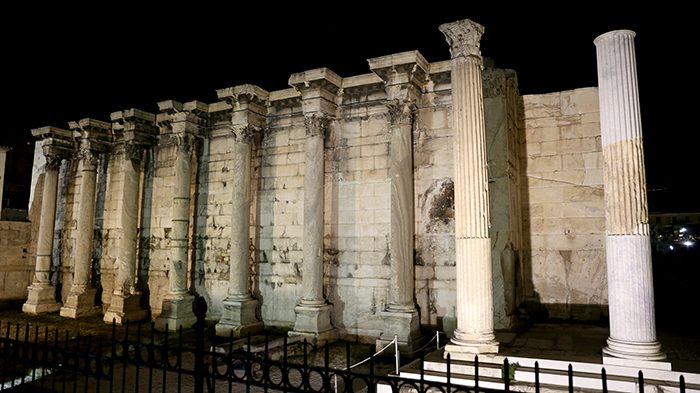
When Athens and other Greek cities revolted against the Roman occupancy in 88 BC, the Roman general Sulla brought them to silence. Many Roman civil wars damaged the beauty of the peninsula, but peace was once again installed when Augustus organized these lands as the province of Achaea, in 27 BC.
Greece was the most important eastern province for the Roman Empire, and the Roman culture was gradually transformed into the Greco-Roman culture.
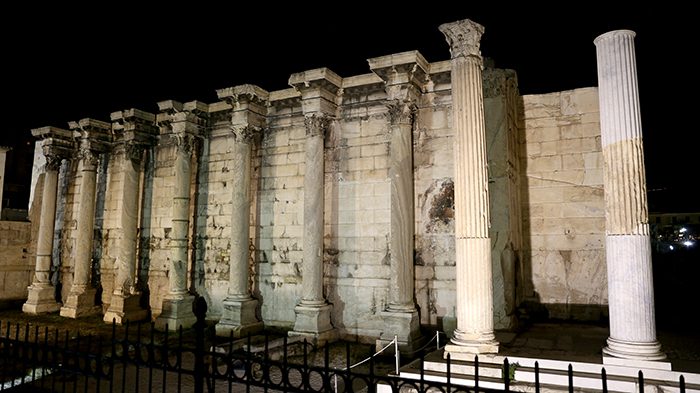
Many Roman Emperors contributed to the development and modernization of Greek cities, so it’s no wonder that the territory of Greece, as we know it today, still houses ancient Roman ruins and structures ready to be discovered. Here are the roman ruins of Athens, Greece!
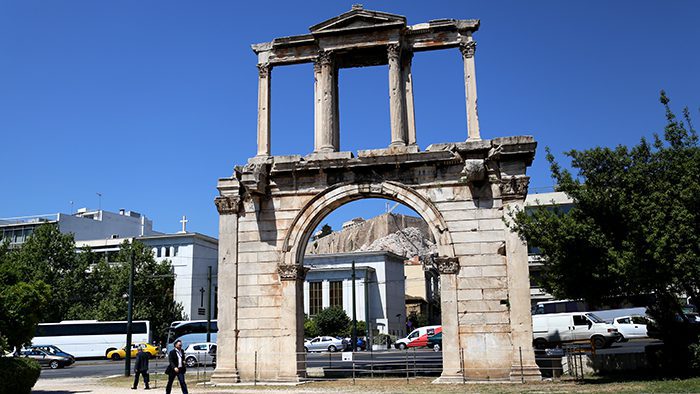
Also known as the Roman Forum of Athens, this Roman agora was built from the funds allocated by Julius Caesar and the Emperor Augustus. It dates from the late 1st century BC and boasts impressive buildings that are still standing. The most interesting of them all is the Tower of the Winds, a structure that is a clock, weather vane, compass and sundial at the same time. This tower dates from around the 1st century BC and is remarkable due to its great state of preservation. The site is also home to the Gate of Athena Archegetis that dates from around 11 BC, and to several ancient public toilets.
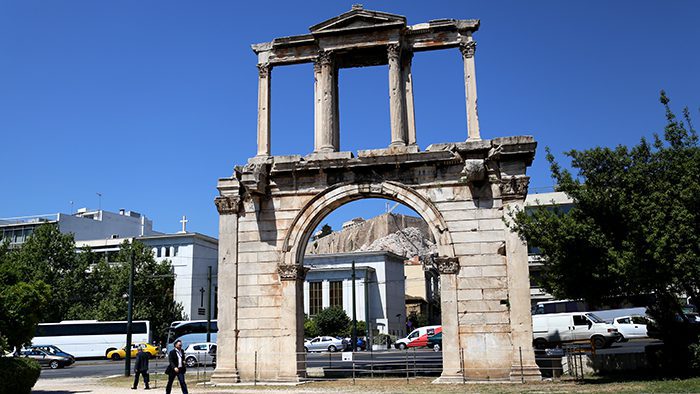
The Arch of Hadrian was built in the 2nd century AD to honor the Roman Emperor Hadrian, most probably around 131 or 131 AD, when the Emperor visited Athens. This arch was not a gate, but more a monument built over the line of an ancient road that connected the Acropolis and the Athenian Agora to the Olympieion and southeast Athens. The inscription that can be found on the western side of the arch states: “This is Athens, the ancient city of Theseus.”
Check out The Roman Ruins of Portugal
The inscription added on the eastern side can be translated as “This is the city of Hadrian and not of Theseus.”. It is believed that these inscriptions are meant to underline the fact that this arch was built at the borders of “old Athens” and “new Athens” or “Hadrianoupolis”.

The Byzantine Museum is home to an impressive collection of 25,000 artifacts very important for the ancient history of Greece. The exhibits displayed here date from the Early Christian, Byzantine, Medieval and post-Byzantine periods. Visitors will get to admire from sculptures, manuscripts and paintings to religious artifacts, iconography and jewels. These objects were gathered from all across Greece and from the regions where the Hellenic and Byzantine culture dominated the settlements.

Hadrian was a Roman Emperor that admired the Greek culture and built many wonderful buildings and structures across the territory of Greece. This library was the heart of an important ancient learning center built also on the orders of Hadrian, between 125 and 132 AD. During its golden age, the library used to house over 17,000 books, manuscripts, scrolls, documents and papyri.
Check out the Top Five Roman Ruins in Extremadura, Spain
Unfortunately, this building was destroyed by the Herulae in 267 AD. The Greeks rebuilt it, but it was once again destroyed following the attacks of Barbarian tribes. During the Byzantine era, this site became the foundation of a few churches. The most remarkable ruins that can be admired today are the Corinthian columns and a beautiful portico that was the entrance to the courtyard of the library.
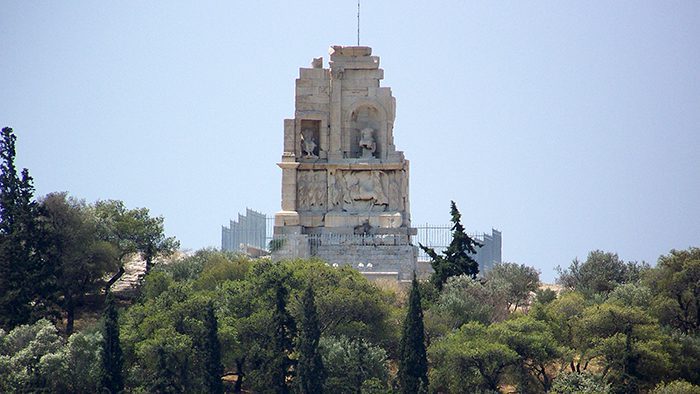
This spectacular monument was erected to honor Gaius Julius Antiochus Epiphanes Philopappos, one of the most important benefactors of Athens. Philopappos was a member of the Roman Senate, and also a patron of the arts and a games magistrate. The monument was built by the citizens of Athens after Philopappos passed away in 116 AD. This two-storey Pentelic monument is made of marble and it is situated close to the Acropolis of the city. Today, the monument is almost as beautiful as it was when it was inaugurated and you can still admire fabulous decorations and the burial chamber where Philopappos found its eternal rest.
Have you visited any of these Roman Ruins in Athens, Greece? Leave us a question or comment below!
Counter
101 Countries • 1432 Cities
Andrew says:
The Byzantine Empire was the Roman Empire, not the Greek one.